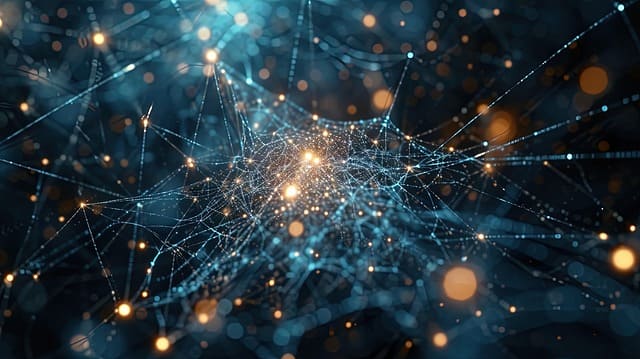Generative AI Meets Daily Life: The Future Unfolds
The integration of generative artificial intelligence into our daily routines has accelerated at an unprecedented pace, with transformative applications emerging across sectors from healthcare and education to entertainment and personal productivity, fundamentally reshaping how we interact with technology in ways previously confined to science fiction narratives.
How Generative AI Is Reshaping Personal Content Creation
Generative AI tools like DALL-E, Midjourney, and Stable Diffusion have democratized creative expression by allowing individuals with no formal training to produce professional-quality artwork, illustrations, and visual content simply by describing their vision through carefully crafted text prompts.
The text-based creative landscape has similarly experienced a revolution through platforms like ChatGPT and Claude, which can draft emails, write poetry, compose music lyrics, create marketing copy, or generate code snippets based on conversational instructions, effectively lowering the barrier to content production across numerous domains.
These technologies are increasingly finding their way into mainstream creative software, with Adobe integrating AI capabilities into Photoshop through Generative Fill, Microsoft embedding Copilot across its Office suite, and numerous startups developing specialized applications that transform industry-specific workflows through AI-powered automation and enhancement.
AI Companions and Virtual Assistants: Beyond Simple Commands
Modern AI assistants have evolved far beyond the simple command-response paradigm exemplified by early versions of Siri or Alexa, now offering contextually aware, personalized interactions that can maintain conversation history, understand nuanced requests, and adapt to individual user preferences over time.
These advanced assistants are increasingly capable of proactive assistance—anticipating needs based on patterns, scheduling appointments without explicit instructions, suggesting relevant information before being asked, and even detecting emotional states to provide appropriate responses during interactions.
The integration of multimodal capabilities allows these AI companions to process and respond to combinations of text, voice, images, and sensor data, creating more natural human-machine interfaces that can, for example, help identify objects in photos, analyze documents handed to a camera, or respond appropriately to facial expressions during video calls.
Everyday Applications Transforming Routine Tasks
In healthcare, generative AI is personalizing patient education by creating custom explanations of medical conditions, translating complex treatment plans into accessible language, and generating visual aids that help patients better understand their diagnosis and care options.
Educational experiences are being revolutionized through AI tutors that adapt to individual learning styles, automatically generate personalized practice problems, provide immediate feedback on assignments, and create custom study materials that address specific knowledge gaps identified through ongoing assessment.
The shopping experience has been enhanced by virtual try-on technologies powered by generative AI, which allow customers to visualize products like clothing, makeup, or furniture in their own context before purchasing, while also generating personalized recommendations based on style preferences and past behavior.
Kitchen creativity has found an unlikely ally in generative AI applications that can suggest recipes based on ingredients already in your pantry, adapt existing recipes to dietary restrictions without sacrificing flavor, or even create entirely new culinary combinations that might never have occurred to human chefs.
 Source: Pixabay
Source: PixabayConclusion
Generative AI has transcended its experimental origins to become deeply embedded in our daily routines, offering personalized experiences that adapt to our unique preferences, automating tedious tasks, and augmenting human capabilities in ways that enhance rather than replace our natural abilities.
The accessibility of these technologies represents a democratization of creative and productive power, allowing individuals without specialized training to accomplish tasks that once required years of expertise—from creating professional-quality visuals to drafting complex documents or coding functional applications.
As these systems continue to evolve, we can expect even deeper integration into our daily lives, with ambient AI that understands context, anticipates needs, and seamlessly assists across devices and environments—ultimately creating a future where the boundary between human intention and technological assistance becomes increasingly fluid and natural.
Frequently Asked Questions
How is generative AI different from traditional artificial intelligence?
Generative AI creates new content (text, images, audio) rather than simply analyzing existing data or making predictions, using complex neural networks to produce original outputs that mimic human-created content.Can generative AI completely replace human creativity?
While generative AI excels at producing content based on patterns it has learned, it lacks true understanding, emotional connection, and lived experience that inform authentic human creativity and original thought.What privacy concerns should I consider when using generative AI tools?
Many generative AI services may store your prompts and outputs for training purposes, potentially exposing sensitive information, so always review privacy policies and consider using specialized private instances for confidential work.How can small businesses leverage generative AI effectively?
Small businesses can use generative AI for cost-effective content creation, customer service automation, personalized marketing materials, data analysis, and streamlining operations without requiring large specialized teams.Will generative AI eliminate jobs or create new opportunities?
Generative AI will likely transform rather than eliminate jobs, automating routine aspects while creating new roles focused on prompt engineering, AI oversight, creative direction, and developing innovative applications of the technology.


